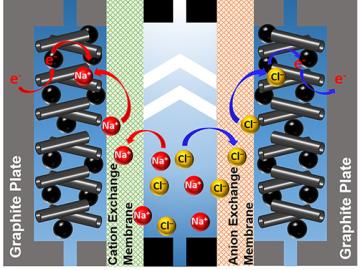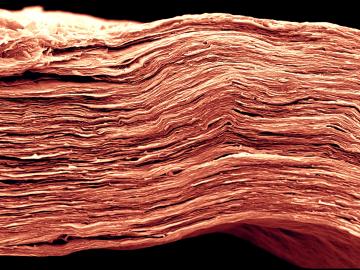
Filter News
Area of Research
- Advanced Manufacturing (3)
- Biology and Environment (31)
- Computational Biology (1)
- Computational Engineering (3)
- Computer Science (7)
- Electricity and Smart Grid (1)
- Energy Science (95)
- Energy Sciences (1)
- Fusion and Fission (7)
- Fusion Energy (8)
- Isotopes (19)
- Materials (43)
- Materials for Computing (5)
- Mathematics (1)
- National Security (25)
- Neutron Science (14)
- Nuclear Science and Technology (12)
- Nuclear Systems Modeling, Simulation and Validation (1)
- Quantum information Science (2)
- Sensors and Controls (1)
- Supercomputing (39)
News Type
News Topics
- (-) Advanced Reactors (27)
- (-) Biomedical (41)
- (-) Clean Water (23)
- (-) Cybersecurity (26)
- (-) Energy Storage (88)
- (-) Grid (45)
- (-) Isotopes (38)
- (-) Machine Learning (37)
- (-) Molten Salt (8)
- (-) Summit (32)
- 3-D Printing/Advanced Manufacturing (96)
- Artificial Intelligence (60)
- Big Data (37)
- Bioenergy (65)
- Biology (74)
- Biotechnology (21)
- Buildings (46)
- Chemical Sciences (57)
- Composites (26)
- Computer Science (119)
- Coronavirus (34)
- Critical Materials (25)
- Education (3)
- Element Discovery (1)
- Emergency (1)
- Environment (126)
- Exascale Computing (17)
- Fossil Energy (2)
- Frontier (20)
- Fusion (36)
- High-Performance Computing (55)
- Hydropower (8)
- Irradiation (2)
- ITER (6)
- Materials (105)
- Materials Science (105)
- Mathematics (8)
- Mercury (9)
- Microelectronics (1)
- Microscopy (39)
- Nanotechnology (47)
- National Security (38)
- Neutron Science (91)
- Nuclear Energy (63)
- Partnerships (35)
- Physics (46)
- Polymers (28)
- Quantum Computing (19)
- Quantum Science (48)
- Security (20)
- Simulation (27)
- Space Exploration (13)
- Statistics (2)
- Transportation (74)
Media Contacts

Using Summit, the world’s most powerful supercomputer housed at Oak Ridge National Laboratory, a team led by Argonne National Laboratory ran three of the largest cosmological simulations known to date.

In a step toward advancing small modular nuclear reactor designs, scientists at Oak Ridge National Laboratory have run reactor simulations on ORNL supercomputer Summit with greater-than-expected computational efficiency.

Scientists at Oak Ridge National Laboratory have developed a low-cost, printed, flexible sensor that can wrap around power cables to precisely monitor electrical loads from household appliances to support grid operations.

A team of scientists led by Oak Ridge National Laboratory used carbon nanotubes to improve a desalination process that attracts and removes ionic compounds such as salt from water using charged electrodes.

OAK RIDGE, Tenn., March 20, 2019—Direct observations of the structure and catalytic mechanism of a prototypical kinase enzyme—protein kinase A or PKA—will provide researchers and drug developers with significantly enhanced abilities to understand and treat fatal diseases and neurological disorders such as cancer, diabetes, and cystic fibrosis.

OAK RIDGE, Tenn., March 11, 2019—An international collaboration including scientists at the Department of Energy’s Oak Ridge National Laboratory solved a 50-year-old puzzle that explains why beta decays of atomic nuclei



OAK RIDGE, Tenn., March 4, 2019—A team of researchers from the Department of Energy’s Oak Ridge National Laboratory Health Data Sciences Institute have harnessed the power of artificial intelligence to better match cancer patients with clinical trials.

Gleaning valuable data from social platforms such as Twitter—particularly to map out critical location information during emergencies— has become more effective and efficient thanks to Oak Ridge National Laboratory.


